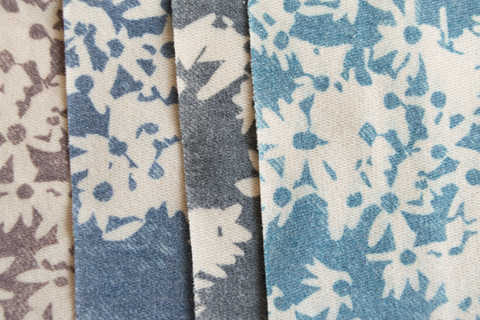Printed fabrics, also known as printed fabrics, are a variety of textiles with printed designs, including cotton and polyester. First, printed fabrics are divided into reactive printing and paint printing from the printing and dyeing process. Pigment printing is a non-reactive dye, the price is relatively cheap, but now there are many special printing materials, the price is not cheap. The reactive dye is a reactive dye, which makes the fabric excellent in dustproof performance, high in cleanliness, high in color fastness and high in cost. 1, reactive printing Reactive printing, as the name suggests, means that our printing dyes are processed by reactive printing. The design elements of reactive printing are more diverse: plant flowers, geometric figures, English letters and different color blocks are organically combined to express different design styles through design methods. Such fabrics are adapted to a wide range of groups and are suitable for a long time. The reactive printed fabrics are bright in color, good in color fastness and soft to the touch. They can be washed and faded, and used for a long time. Active printing is also known as reactive dyes. It contains reactive groups that react with fiber molecules. In the dyeing and printing process, the reactive groups of the dye form a bond with the fiber molecules such that the dye and the fibers form a unitary body. The fabric has excellent dustproof performance and high cleanliness, and does not fade after a long time. 2. Pigment printing Also known as paint printing, since the pigment is a water-insoluble coloring matter, it has no affinity for fibers, and its coloring is achieved by coating of a polymer compound (adhesive) capable of film formation and adhesion to fibers. Pigment printing can be used for the processing of any fiber textile. It has superiority in the printing of blended and woven fabrics. The process is simple, the chromatogram is wide, the flower shape is clear, but the hand feel is not good and the rubbing fastness is not high. It is easy to fade after washing. Second, the classification determined by the printing process is as follows: First of all, printed fabrics are divided into ink-printed fabrics and transfer-printed fabrics. The main difference between the two fabrics is that the printing process is different. First look at ink-printed fabrics, generally divided into rotary screen printing fabrics and flat screen printing fabrics, mainly to introduce their characteristics: flat screen printing production has low efficiency, but wide adaptability, flexible application, suitable for small batch and multi-variety production. The rotary screen printing is a continuous processing, with high production efficiency, and has the advantages of roller and flat screen printing, but there are certain limitations in the fineness of the pattern and the richness of the printing color. The transfer printing process of the transfer printing fabric is simple, the investment is small, and the production is flexible. The golden sun fabric is mainly reactive printing, and the product is rich in flower patterns and bright in color. It is an ideal choice for modern home decoration. Editor in charge: Xu Yuehua If you are a yoga lover, then you must buy these clothes SHAOXING LIDONG TRADING CO.,LTD , https://www.lidong-garment.com


Our fabric has been strictly selected, is the most suitable for making yoga clothing